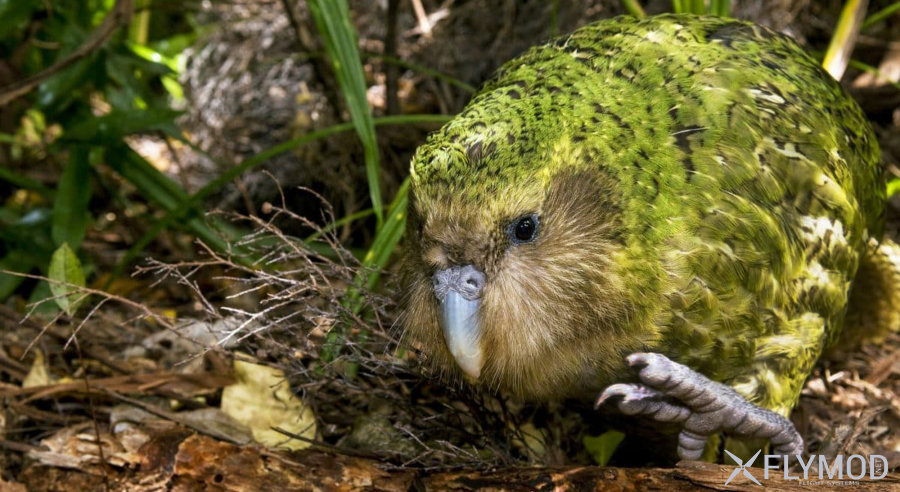- My cart
- Prices in: UAH
Show prices in:
- Exchange $: 43.7uah
- UA RU EN
Authorization withGoogle
Authorization withGoogle
Show prices in:

The kakapo or owl parrot is the world's largest and only flightless parrot, found only in New Zealand and its neighboring islands. It was widespread throughout New Zealand before the arrival of colonizers, but by the end of the 19th century had almost completely disappeared and was even considered an extinct species for a time.
In the 20th century, most attempts to preserve the Kakapo population proved futile. Human-introduced mammalian predators such as opossums, rats, and domestic cats left no chance for the chicks to survive. In addition to predators, one of the obstacles was the low reproductive rate of the population, as Kakapo breed once every 3-5 years, when the New Zealand Rimu tree (Cypress dacridium) provides a large crop of fruit to feed the chicks.
By 1999, there were about 60 birds persisting, relocated to several predator-free islands. In the 20 years of the restoration program, their numbers have increased to only 147 adult birds. Each bird has a unique name and is tracked using GPS trackers.
2019 has been the most fruitful year in owl parrot conservation. So far (late March), 72 chicks have already been born and the breeding season is not over yet. One factor in the tremendous success of this season has been the use of drones for artificial insemination. Kakapo islands are almost entirely mountainous forests and in the wild a female kakapo needs to travel over 2km of mountainous terrain to mate. Through the use of drones, volunteers can quickly transport biological material from male to female, even to the most inaccessible corners of the islands.
Due to their small numbers and close breeding, the kakapo population has low genetic diversity, which negatively affects their health and ability to reproduce. The use of drones helps to collect and transfer biological material of parrots with the rarest genes, contributing to the future survival of such a unique bird species.
Comments
There are no messages yet. Leave your message first.
Registration